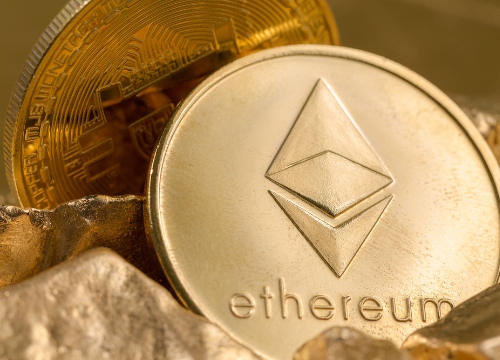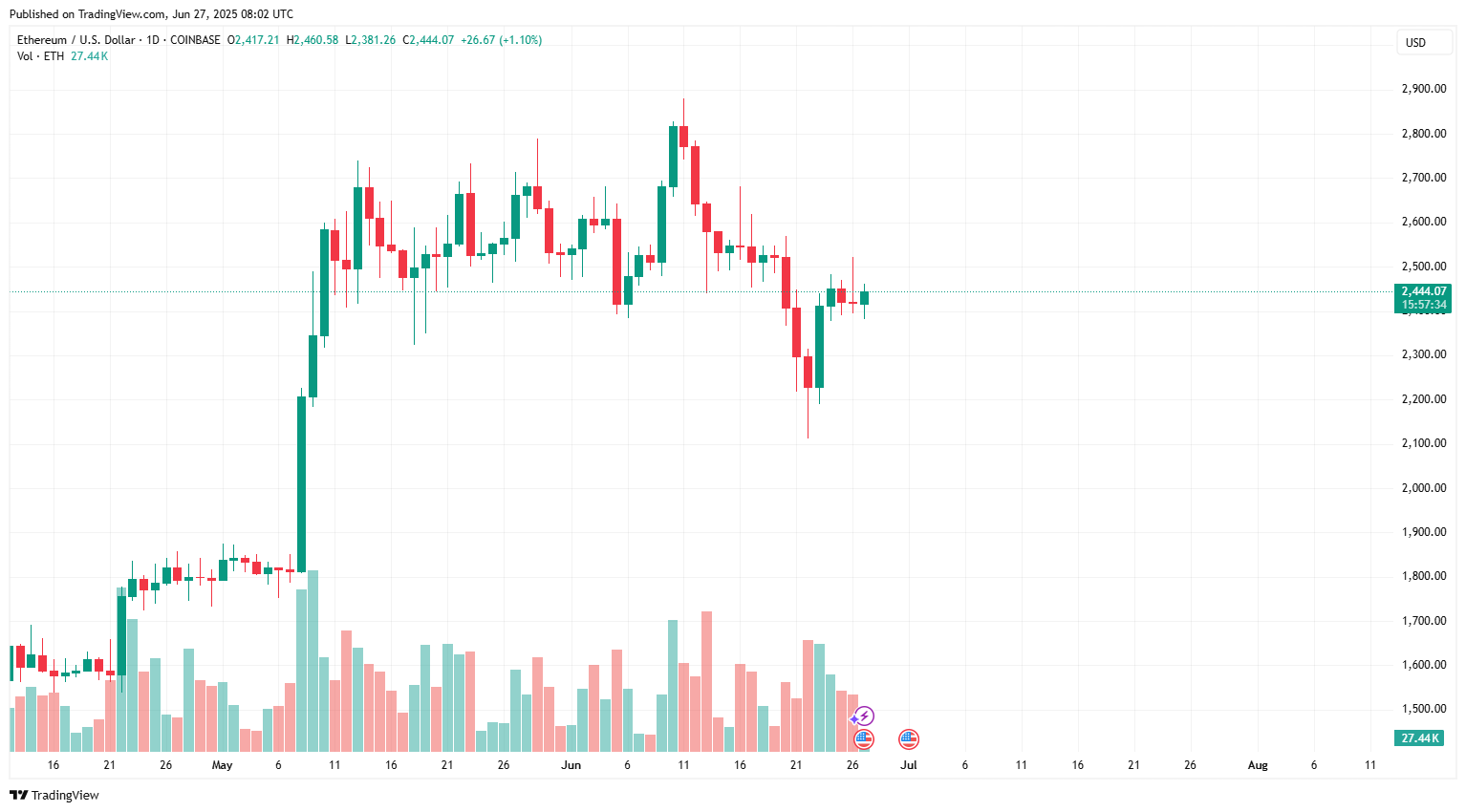Why Hasn't Ethereum Broken Through the $2,500 Key Level?
- Gold Price Forecast: XAU/USD drifts higher above $4,200 as Fed delivers expected cut
- Gold Price Steady Climb and the Sudden Surge of Silver and Copper: Will Their Bull Run Extend Into 2026?
- Gold Price Forecast: XAU/USD climbs above $4,250 as Fed rate cut weakens US Dollar
- Bitcoin Cash Unveiled: Why Did BCH Price Surpass BTC? Can it Soar to $1,000 in the Future?
- Silver Price Forecast: XAG/USD refreshes record high, looks to build on move beyond $61.00
- AUD/USD holds steady below 0.6650, highest since September ahead of China's trade data

Ethereum has experienced significant volatility over the past week, driven by geopolitical instability.
Ethereum prices briefly fell below $2,200 after escalating conflict in the Middle East sparked panic selling. On Tuesday, Ethereum prices surged nearly 8% before losing momentum and fluctuating slightly in the $2,400 region in recent days.
Ethereum (ETH) fell nearly 1% in early trading on Friday. As of this writing, Ethereum is trading around $2,440. So why is Ethereum still struggling to break through $2,500 after tensions in the Middle East have eased?

Source: TradingView
One important reason is that market sentiment remains cautious. Ethereum's buying and selling activity in its derivatives and spot markets has been fairly neutral over the past few days, indicating that caution is still prevalent in the market.
Open interest (OI) in the derivatives market has not been able to break through the 13 million ETH mark since it fell on Saturday. Open interest refers to the total value of open or unsettled contracts in the derivatives market.
Separately, according to CryptoQuant, the balance of whales holding 10,000 to 100,000 ETH has remained stable since the start of the week, with no significant buying or selling activity. Meanwhile, exchange reserves have risen slightly, indicating a slight increase in selling pressure this week.
While these indicators reflect cautious market sentiment, there is no lack of positive momentum.
Despite the largely flat price, Ethereum's active addresses have grown again, breaking a downward trend that began on June 13. And these addresses have also been active in transactions, as the number of Ethereum transactions increased from 1.23 million to 1.75 million between Sunday and Wednesday, indicating that interest in the Ethereum ecosystem has not waned.
The growth in network activity is a positive sign. If more positive economic news follows, such as the United States signing a tariff agreement with other countries or the U.S. economy emerging from weakness, it could lay the foundation for Ethereum's long-term recovery.
Read more
Before making any trading decisions, it is important to equip yourself with sufficient fundamental knowledge, have a comprehensive understanding of market trends, be aware of risks and hidden costs, carefully consider investment targets, level of experience, risk appetite, and seek professional advice if necessary.
Furthermore, the content of this article is solely the author's personal opinion and does not necessarily constitute investment advice. The content of this article is for reference purposes only, and readers should not use this article as a basis for any investment decisions.
Investors should not rely on this information as a substitute for independent judgment or make decisions solely based on this information. It does not constitute any trading activity and does not guarantee any profits in trading.
If you have any inquiries regarding the data, information, or content related to Mitrade in this article, please contact us via email: insights@mitrade.com. The Mitrade team will carefully review the content to continue improving the quality of the article.

